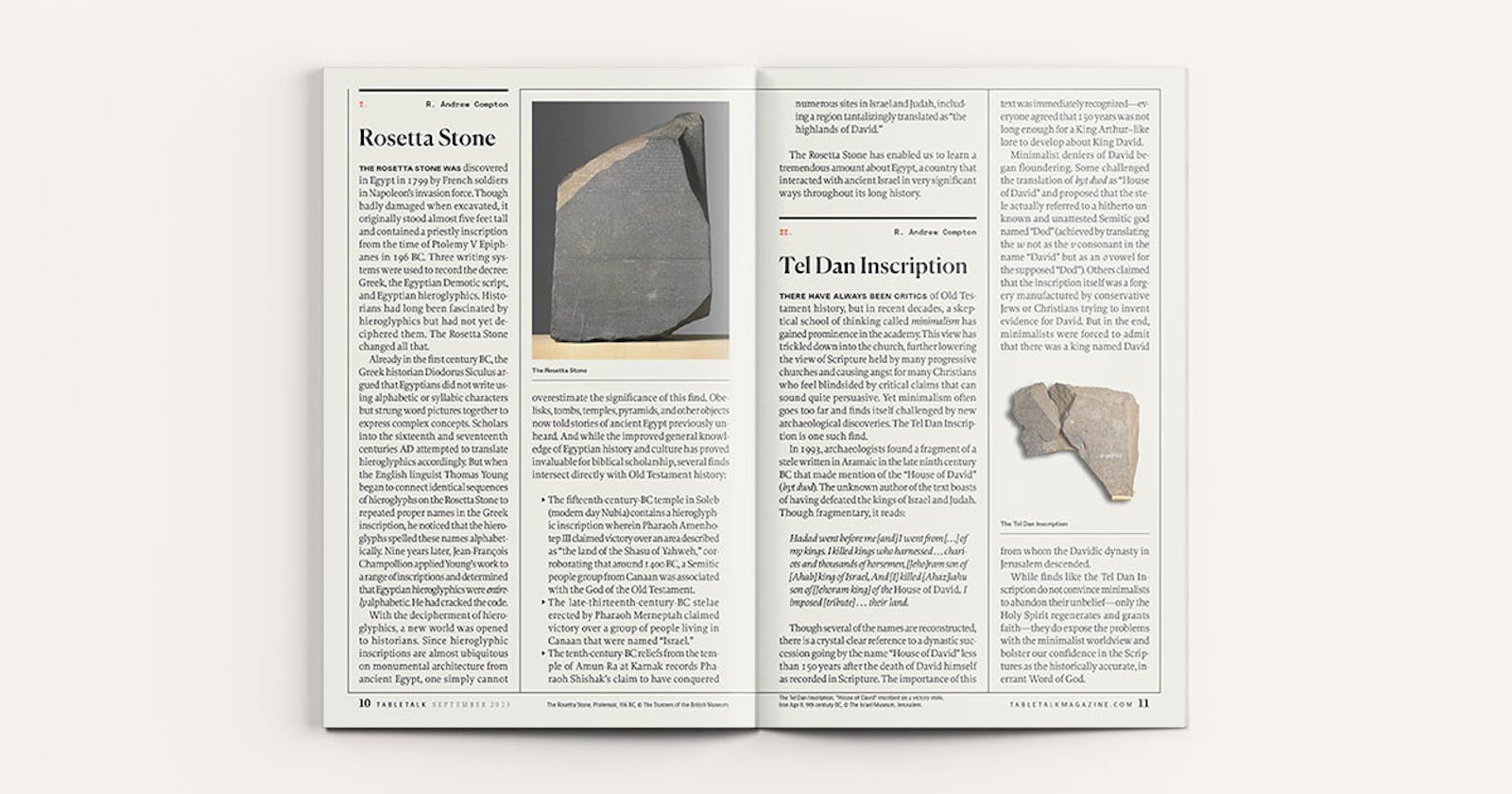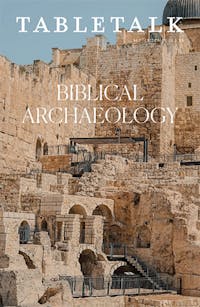
Request your free, three-month trial to Tabletalk magazine. You’ll receive the print issue monthly and gain immediate digital access to decades of archives. This trial is risk-free. No credit card required.
Try Tabletalk NowAlready receive Tabletalk magazine every month?
Verify your email address to gain unlimited access.
There have always been critics of Old Testament history, but in recent decades, a skeptical school of thinking called minimalism has gained prominence in the academy. This view has trickled down into the church, further lowering the view of Scripture held by many progressive churches and causing angst for many Christians who feel blindsided by critical claims that can sound quite persuasive. Yet minimalism often goes too far and finds itself challenged by new archaeological discoveries. The Tel Dan Inscription is one such find.
In 1993, archaeologists found a fragment of a stele written in Aramaic in the late ninth century BC that made mention of the “House of David” (byt dwd). The unknown author of the text boasts of having defeated the kings of Israel and Judah. Though fragmentary, it reads:
Hadad went before me [and] I went from [. . .] of my kings. I killed kings who harnessed . . . chariots and thousands of horsemen, [Jeho]ram son of [Ahab] king of Israel, And [I] killed [Ahaz]iahu son of [Jehoram king] of the House of David. I imposed [tribute] . . . their land.
Though several of the names are reconstructed, there is a crystal-clear reference to a dynastic succession going by the name “House of David” less than 150 years after the death of David himself as recorded in Scripture. The importance of this text was immediately recognized—everyone agreed that 150 years was not long enough for a King Arthur–like lore to develop about King David.

Minimalist deniers of David began floundering. Some challenged the translation of byt dwd as “House of David” and proposed that the stele actually referred to a hitherto unknown and unattested Semitic god named “Dod” (achieved by translating the w not as the v consonant in the name “David” but as an o vowel for the supposed “Dod”). Others claimed that the inscription itself was a forgery manufactured by conservative Jews or Christians trying to invent evidence for David. But in the end, minimalists were forced to admit that there was a king named David from whom the Davidic dynasty in Jerusalem descended.
While finds like the Tel Dan Inscription do not convince minimalists to abandon their unbelief—only the Holy Spirit regenerates and grants faith—they do expose the problems with the minimalist worldview and bolster our confidence in the Scriptures as the historically accurate, inerrant Word of God.
